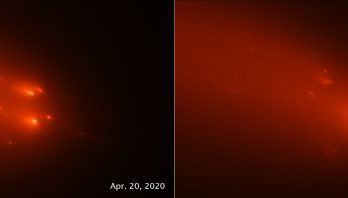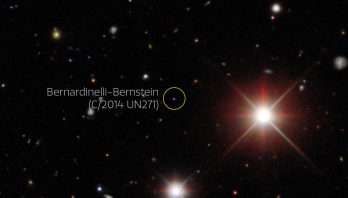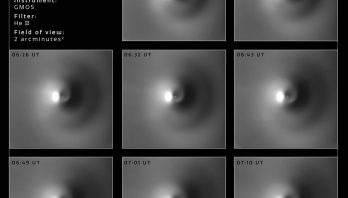
STScI: Comet ATLAS May Have Been a Blast from the Past
In a new study using observations from NASA's Hubble Space Telescope, astronomer Quanzhi Ye of the University of Maryland in ...

NOIRLab: Giant Comet Found in Outer Solar System by Dark Energy Survey
A giant comet from the outskirts of our Solar System has been discovered in 6 years of data from the ...

STScI: Comet Makes a Pit Stop Near Jupiter’s Asteroids
After traveling several billion miles toward the Sun, a wayward young comet-like object orbiting among the giant planets has found ...

NOIRLab: A Dizzying Show by Comet NEOWISE
Gemini Observatory images reveal striking details of our recent celestial visitor’s rotation ...
